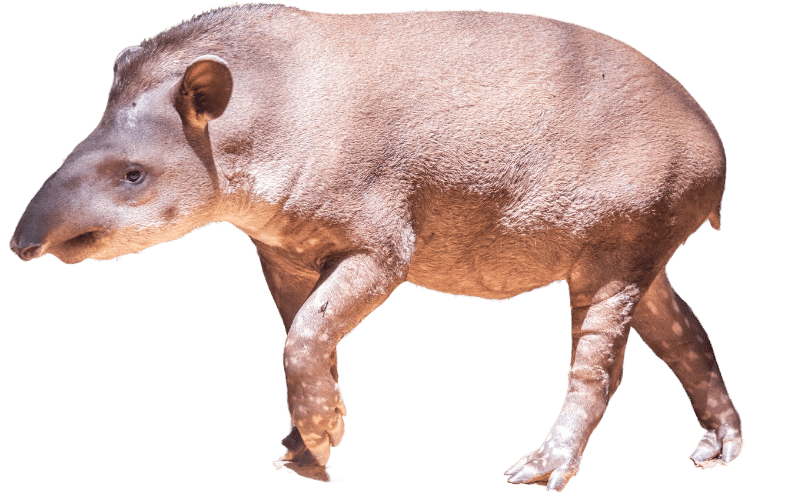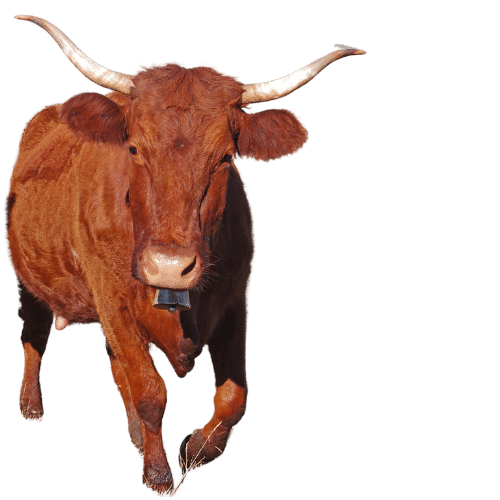No matter whether you are a human being, bat, or garden shrub, you need iron to survive.
-Leah J. Kim and Jeeyon Jeong, Bats, Blood, and the Biology of Iron: It Is All About Balance
Iron is a nutrient that life can’t live without. As Dr. Sharon Moalem puts it, “Just about every form of life has a thing for iron.” Animals need iron as much as humans.
And animals, like people, need just the right amount of iron, with each species having different iron requirements and iron metabolisms. From horses to bats and every living thing in between; all critters and creatures can develop both iron deficiency and iron overload when daily sustenance isn’t in balance.
While iron deficiency is a well-known phenomenon, studies are showing that iron overload is actually much more common in animals than we previously thought. In fact, iron overload “was considered rare in veterinary species until the 1970s and 1980s, after which it became increasingly recognized in many taxa of birds and mammals.”
Nowadays there are several documented cases in animals. Researchers have even studied animal genes that resemble the human HFE gene, the gene that mutates to cause hereditary hemochromatosis in people. The goal is to compare how this disorder presents itself in animals and people in order to find better treatments.
So if you’re wondering who your animal counterparts are, here’s a compilation of animals with more similarities to you than you ever knew.
ANIMAL CASES OF IRON OVERLOAD
 Egyptian fruit bat
Egyptian fruit bat
 Common mynah
Common mynah
 Bali mynah
Bali mynah
 Lory
Lory
 Aracari
Aracari
 Toucan
Toucan
 Black rhino
Black rhino
 Bottlenose dolphin
Bottlenose dolphin
 Horse
Horse
 Tapir
Tapir
 Red deer
Red deer
 Salers cow
Salers cow
How do animals acquire iron overload? Where does the old nature vs nurture debate come into play? There are instances of both being the cause, but animal hemochromatosis often results from a bad combination of genetics and nutrition, with the culprit being the wrong diet for an animal whose body evolved to soak up all the iron it could.
FORTIFIED DIETS IN CAPTIVITY
A significant number of animal cases occur in domestic settings, such as within zoos, sanctuaries, ranches, and by animal breeders. No longer in the wild, these animals are fed an unnatural diet fortified with vitamins and minerals. Due to humans’ minimal understanding of animal iron requirements, there have been many documented cases where animals are given far too much iron for what their body is meant to handle.
Certain species of animals are more susceptible to iron overload in these situations.

EGYPTIAN FRUIT BATS
In the 1980s, the dangers of iron fortification revealed themselves with captive Egyptian fruit bats at the Toronto Zoo. Zookeepers added a vitamin powder mixture to the bat food. Habituated to eating a diet low in iron in their natural habitat, the bats couldn’t handle the excess from the powder, so they eventually developed liver disease and died. The zookeepers noticed that the vampire bats (who traditionally drink blood in the wild, an iron-rich substance) were fed the same fortified powder and were completely fine. This pointed to iron as the cause of mortality for the fruit bats.
HORSES
“If you ask any veterinary pathologist they will tell you that finding black, iron-loaded livers at necropsy is common in horses. The colour comes from iron deposits called hemosiderin. This is so common it is considered ‘normal,'” says Eleanor M. Kellon, VMD, an expert in equine nutrition. One notable instance of horse hemochromatosis affected 22 horses due to iron in their drinking water, which slowly elevated their iron levels over a period of several years, until finally they all got so sick that they were diagnosed with liver disease. One possible explanation of horse hemochromatosis put forth by Dr. Kellon is the special way that their digestive tract is built, which may make them more likely than other animals to absorb iron from their food and water.
BLACK RHINOS
Probably the most studied illustration of animal iron overload in captivity occurs with black rhinos. Rhinos evolved eating a diet of low-iron foods like twigs and leaves. Researchers theorize that because the food in their wild habitat is naturally very low in iron, rhinoceros bodies adapted to absorb iron highly effectively. When placed in captivity and fed a fortified diet by humans, these rhinos became prone to developing iron overload, as scientists admit that we simply cannot replicate their natural food sources, and the food we substitute is higher in iron. Since the black rhino is critically endangered, with over 90% of the wild population wiped out by poachers, there are major efforts to rehabilitate their numbers in zoos and sanctuaries. Consequently, this rhino illness in captivity has caused extra concern. This has resulted in special publications focusing on the management of the condition, which has spurred advancement in understanding and treatment of animal iron overload globally.
BOTTLENOSE DOLPHINS
Wild dolphins can develop hemochromatosis, however captive dolphins experience the condition much more frequently.
OTHER ANIMALS
Iron overload has been documented in many other domesticated animals, including tapirs as well as birds such as toucans, lories, and turdidae birds.
GENETICS IN THE WILD
The examples we’ve looked at so far pertain to animals in captivity who are mostly eating and drinking from iron-rich sources provided by humans.
What about animals in the wild?
There’s less known about the progression of iron overload in animals surviving out in their natural habitat. This isn’t surprising – it’s a lot harder to study iron metabolism and blood composition of animal populations in the wild.

Over the past few decades, researchers have pinpointed a few animals that are genetically vulnerable to hemochromatosis, and the consensus is, “Iron overload is a very frequent finding in several animal species and a genetic predisposition is suggested.”
Even when in their native habitat and eating the diets of their ancestors, the diets they evolved with, the diets they were meant to eat, certain animal species are intrinsically prone to iron overload.
MYNAH BIRDS
In terms of animal hemochromatosis occurring spontaneously in the wild, mynah birds are one of the most susceptible species. It seems that their bodies are naturally inclined to absorb more iron than is good for them, “implicating a ‘mis-sensing’ of body iron similarly to human hereditary haemochromatosis.”
SALERS CATTLE
Salers cattle are another example where it’s common to see hemochromatosis in the gene pool. Their DNA has even been studied to shed light on the correlations to human iron overload, with researchers noting commonalities to “hemochromatosis in human beings in which there is a hereditary defect in iron metabolism.”
RED DEER
Researchers are also leaning towards the idea that red deer have a propensity towards genetic mutations which increase iron uptake, eventually causing hemochromatosis. While no one’s identified the deer genes that cause this yet, they’re on the search.

WHAT CAN WE LEARN FROM ANIMAL HEMOCHROMATOSIS?
While some vitamins and minerals can pendulum swing back and forth within a wide range and cause minimal harm inside an organism, the correct amount of iron is non-negotiable for health within all lifeforms.
These examples of animal hemochromatosis just go to show that iron is a precariously complex mineral for not just people, but all animals. As in humans, excess iron presents itself in animals in a variety of detrimental ways, including liver disease, increased chances for type 2 diabetes and metabolic syndrome, and death.
Especially when fed fortified diets, animals can suffer because of our lack of understanding of this trace mineral. This is why it’s so important to think seriously before adding daily vitamins and supplements, to read labels on food, and to filter drinking water for both ourselves and our pets.
The good news is that animal iron overload is now a recognized disorder, and animal biologists and caretakers are undertaking the challenge to prevent it when possible and alleviate it upon diagnosis. Dolphins, rhinos, tapirs, and even birds have successfully been given phlebotomies! (Can you imagine a bird doing bloodletting?! It’s really happened.) Nutritional changes towards a low-iron diet as well as a promising treatment protocol using plant polyphenols are also methods that are being researched and tried in animals.
So for all my animal lover friends out there, if you’ve been looking for an animal familiar or kindred spirit, I hope you’ve found one in this post. Now’s the time to feel hope and curiosity, as hemochromatosis is more common than we think in this world, and the solutions are coming to light.


The views expressed in this post are for informational purposes only. This post is not, nor is it intended to be, a substitute for professional, medical, or nutritional advice, diagnosis, or treatment, and should never be relied upon for professional, medical or nutritional advice, diagnosis, or treatment.
No content on talorae.com, including but not limited to pictures, graphics, videos, and text, may be republished or distributed, for financial gain or not, without my written permission.
As an Amazon Associate I earn from qualifying purchases. The above content may contain affiliate links, meaning I do get a commission when you make a purchase through those links. There is no additional cost to you. Please read my disclaimer for more info.
